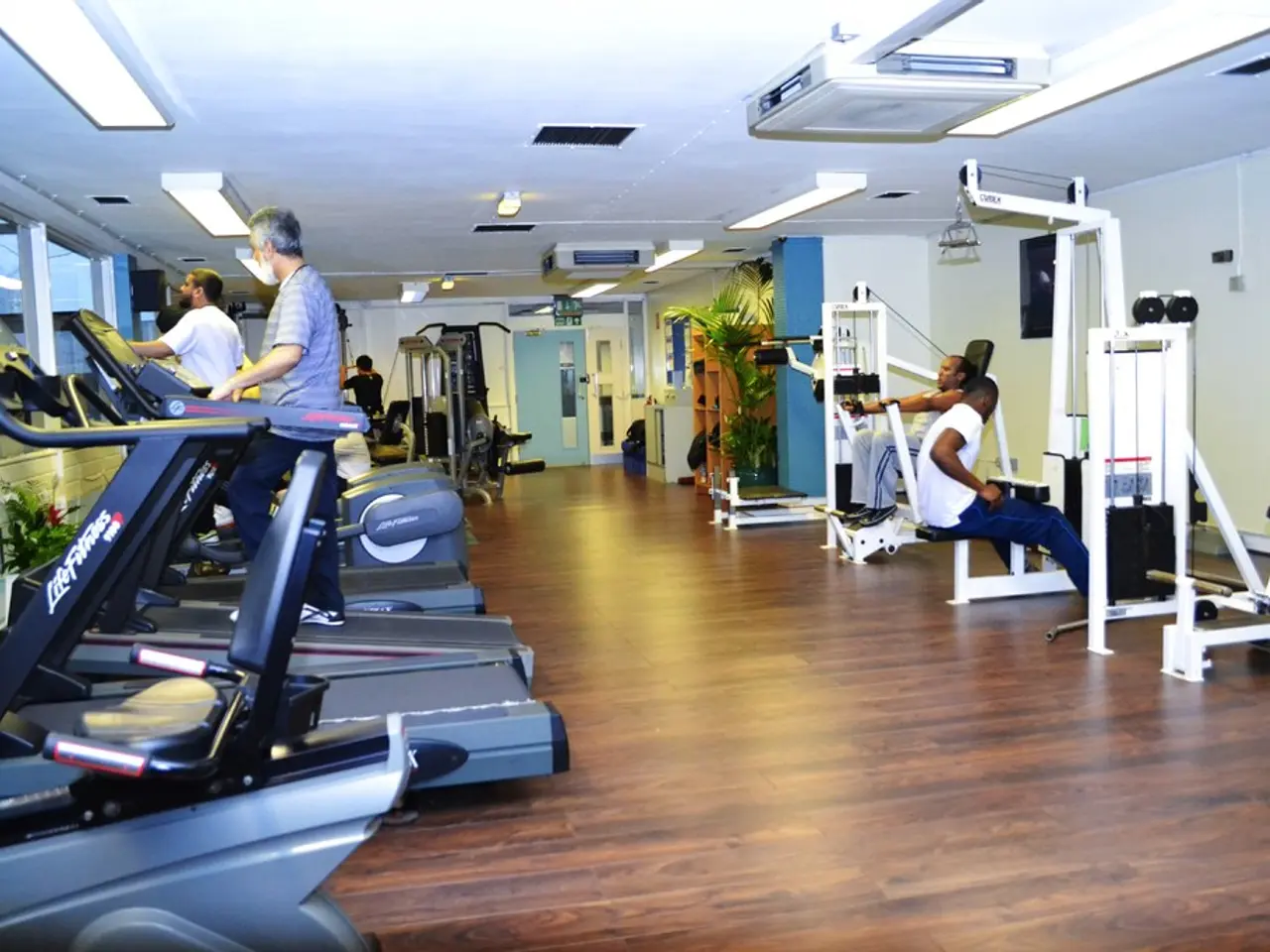Essential Powerful Actions Every Adult Male Beyond Fifty Should Embrace for a Long Life
Strength training is a crucial tool for men over 50, offering numerous benefits that extend beyond the gym. From rebuilding muscle mass to improving balance and mental health, a well-rounded strength training routine can help counteract age-related muscle loss and support independence in daily life.
The Advantages of Strength Training for Men Over 50
Strength training is not just about building bulky muscles. It's about staying capable, resilient, and healthy as you age. Regular strength training can help manage weight, improve bone density, protect joints, boost energy, and enhance functional strength.
After the age of 50, muscle mass naturally declines, and bones lose density. Strength training can help counteract these changes, reducing the risk of falls and injuries, and maintaining both physical and mental health.
Recommended Strength Exercises for Men Over 50
A balanced strength training routine should cover all major muscle groups. Recommended exercises include:
- Squats or lunges for the legs and hips
- Push-ups or chest presses for chest and shoulders
- Rowing motions (such as resistance band rows or bent-over dumbbell rows) for the back
- Overhead presses for shoulders
- Biceps curls and triceps extensions for arms
- Core exercises like planks or bridges
Performing full-body strength workouts at least two times per week is recommended for balanced strength development and joint support. These exercises help build muscle, improve joint stability, and enhance overall functional ability to perform daily tasks with greater ease and confidence.
Safety and Sustained Benefits
For safety and sustained benefits, it's important to focus on form, prioritise compound movements, and follow exercise guidelines for older adults. Lifting heavier weights relative to one's strength level can preserve muscle function long-term and support both physical and cognitive health as men age.
Recovery is also crucial. Don't skip rest days, prioritise quality sleep, and include mobility work to help your body repair and perform better.
A Sample Exercise: The Dead Bug
The dead bug exercise targets the rectus abdominis, transverse abdominis, hip flexors, and lower back. To perform the dead bug exercise, lie on your back with arms extended and knees bent at 90 degrees, engage your core, flatten your lower back against the floor, slowly lower your right arm and left leg towards the floor without arching your back, return to the starting position, then repeat with the opposite arm and leg.
Recommended sets and reps for the dead bug exercise are 3 sets of 10 to 12 reps per side with rest of 30 to 45 seconds between sets. Variations for the dead bug exercise include weighted dead bugs, stability ball dead bugs, band pullover dead bugs, and dead bug crunches.
Progressing with Strength Training
Progress gradually by increasing weight, reps, or sets over time to keep challenging your muscles. Don't forget to prioritise compound movements for strength training after 50, such as squats, rows, and presses.
Strength training offers numerous benefits for men over 50, from improving mental health to reducing the risk of falls and injuries. With a well-rounded routine and a focus on form, you can maintain and build muscle, support joint health, and enhance your overall functional ability to perform daily tasks with greater ease and confidence.
Strength training extends beyond gym workouts, providing men over 50 with benefits such as managing weight, improving bone density, protecting joints, boosting energy, and enhancing functional strength.
A balanced strength training routine should target all major muscle groups, including squats or lunges for legs, push-ups or chest presses for chest and shoulders, rowing motions for back, overhead presses for shoulders, arm exercises for biceps and triceps, and core exercises like planks or bridges.
For safety and sustained benefits, focus on form, prioritize compound movements, and follow exercise guidelines for older adults. Also, recovery is crucial – don't skip rest days, prioritize quality sleep, and include mobility work.
The dead bug exercise targets key muscle groups and can be performed by lying on your back with arms extended and knees bent, engaging your core, flattening your lower back against the floor, lowering one arm and opposite leg towards the floor, then repeating with the other side.
As you progress with strength training, gradually increase weight, reps, or sets to continue challenging your muscles, while still prioritizing compound movements. This approach will help maintain and build muscle, support joint health, and improve overall functional ability.




